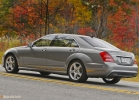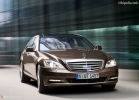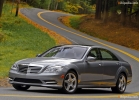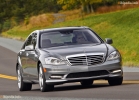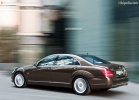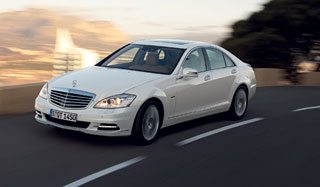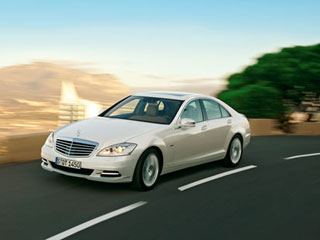Mercedes Benz S-Class W221 Class since 2009 sedan
Mercedes-Benz S400 HYBRID. The third element
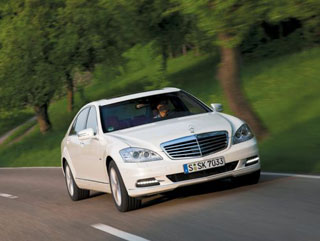 Mercedes-Benz S400 HYBRID. Price: 4562800 rub. On sale: since June 2009
Mercedes-Benz S400 HYBRID. Price: 4562800 rub. On sale: since June 2009 The road premiere of the updated S-Class C under the Mercedes-Benz History Hybrid Motor allows us to say that a new standard of innovative automotive industry appears in the history of Mercedes-Benz.
Test pilot
Vladimir Makkaveev, 31 years old, automobile journalist, driving experience of 12 years, personal car - Volvo C30
Today, few people remember that the famous three-beam star Mercedes-Benz symbolizes the conquest of three elements with German motors: earth, water and air. But at the end of the first decade of the XXI century, the symbol of the legendary car brand gets a new meaning. Finding the third, following gasoline and diesel engines, the drive element, Mercedes-Benz simultaneously performs a hybrid revolution! The updated S-Class is not only the first hybrid of the Stuttgart brand, but also the first hybrid model in the history of serial automotive industry, which instead of traditional massive nickel-metallogid batteries uses light and compact size with a standard battery of high-ion battery of high density. As a result of such an innovative approach, S 400 Hybrid turned only 60 kg heavier, but 27 liters. With. Powerful than the basic S 350 with the same gasoline 3.5 -liter engine.
Formally hybrid S-Class drive, as well as the Lexus RX 450H drive, is built on the basis of a parallel-sequential scheme. That is, theoretically, the car can move exclusively on an electric protrusion, with a disabled gasoline engine. In practice, the possibility of an electric drive of a Stuttgart hybrid is much more modest than that of the Japanese. Unlike Lexus, a pair of electric motors of which not only allow RX 450H to move off, but can also go to a distance of up to 3 km, 20 electric horses of the German motor are not designed to independently move the 2-ton S-Class from their place. All autonomy of movement on an electric motor does not exceed 20 seconds, and even then in a deceleration mode or at speeds less than 10 km/h. The Mercedes-Benz hybrid is still more focused on a consistent scheme: joining the work with a gasoline engine, it helps to optimize fuel consumption at start, increases the power during acceleration. However, with soft traffic mode along the autobahn, the functionality of the German hybrid is markedly reduced: the limited battery capacity does not allow motor-E to work for a long time without recharging, which is carried out only on braking and descent with an angle of more than 8%.
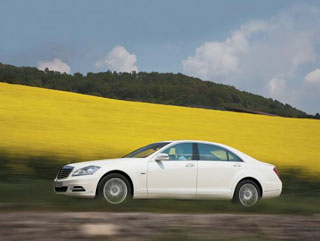 In general, the indicators of the hybrid version of the S-Class in comparison with the only direct competitor in the 5-liter Lexus LS 600H class look more than impressive: fuel consumption in a mixed cycle is less than 1.4 liters (7.9 versus 9.3 l/100 km ), emissions of CO2 by 33 g/km (186 versus 219 g/km). But in fairness, it should be recognized that in comparison with the all-wheel drive RX 450H with a gasoline engine of a similar volume of 3.5 liters and equal in power (299 hp) of the second generation hybrid system, S 400 HYBRID is still inferior to Lexus in cost-ownedness 1 , 6 l/100 km and surpasses in the number of emissions +38 g/km.
In general, the indicators of the hybrid version of the S-Class in comparison with the only direct competitor in the 5-liter Lexus LS 600H class look more than impressive: fuel consumption in a mixed cycle is less than 1.4 liters (7.9 versus 9.3 l/100 km ), emissions of CO2 by 33 g/km (186 versus 219 g/km). But in fairness, it should be recognized that in comparison with the all-wheel drive RX 450H with a gasoline engine of a similar volume of 3.5 liters and equal in power (299 hp) of the second generation hybrid system, S 400 HYBRID is still inferior to Lexus in cost-ownedness 1 , 6 l/100 km and surpasses in the number of emissions +38 g/km. However, in the fight with Japanese hybrids, the new S-Class has other trump cards. By the number of innovative auxiliary electronics systems, the hybrid Mercedes-Benz S 400 does not know equal among all cars represented in the Russian market! Active suspension, night vision systems, stabilization in the lateral wind, longitudinal redistribution of brake force, a unique double vision monitor, SPLITVIEW, and finally, the long-awaited Joker from the sleeve system of adaptive cruise control of Distronic Plus with the automatic braking function to a complete stop. The analogue of the latter in Russia is still available only on Volvo XC60. Moreover, the measurements of the efficiency of the Distronic Plus Mercedes-Benz braking, conducted by our German colleagues from Auto Motor und Sport, showed that in comparison with Volvo City Safety, the German system is inferior in speed intensity of less than 30 km/h: 0 41 versus 1.0 g. When stopping at a speed of 50 km/h, the account will already be in favor of the Germans: 0.96 versus 0.29 g!
Artificial hybridization
Every year more and more manufacturers are thinking about creating hybrid cars. Following the Japanese Lexus, Toyota and Honda, the Germans were also interested in the development of serial hybrid models: Mercedes, Volkswagen, Porsche. However, despite all the charms of hybrids, this does not mean that electric traction is perceived as a serious alternative to traditional internal combustion engines. In fact, the dispute between electric motors and the internal combustion engine ended at the beginning of the 20th century. Since then, in the balance of power in this
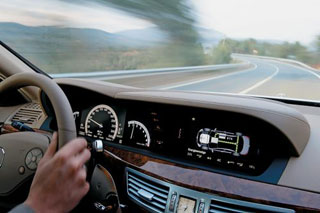 the confrontation has little changed and will not change until new ultra -light and capacious energy drives have been mastered and brought to serial production. Today's hybridization is in many ways artificial. It is unlikely that buyers of Mercedes-Benz S-Class or Lexus RX 450H cars are seriously thinking about how to save several extra gasoline liters. And there are not many people who want to overpay for the ecology, at least in Russia. Hybrids are bought due to fashion for innovative technologies! And from this point of view, hybridization is a great tool for attracting new customers for manufacturers.
the confrontation has little changed and will not change until new ultra -light and capacious energy drives have been mastered and brought to serial production. Today's hybridization is in many ways artificial. It is unlikely that buyers of Mercedes-Benz S-Class or Lexus RX 450H cars are seriously thinking about how to save several extra gasoline liters. And there are not many people who want to overpay for the ecology, at least in Russia. Hybrids are bought due to fashion for innovative technologies! And from this point of view, hybridization is a great tool for attracting new customers for manufacturers. Given the motivation of customers, both paths and the one that preaches Lexus, which builds hybrids that can really move on an electric protrusion, and the one that chose Mercedes-Benz, which essentially equipped his first hybrid with an advanced system of recovery of kinetic energy, similar to Kers used in Formula 1, have the right to exist. The Japanese method is certainly more honest and productive, but more complex and expensive. The German approach with a compact battery and a small electric motor, set sequentially with a gasoline engine, allows you to equip almost any of the existing models with minimal costs, but also formally hybrid drive.
We do not love
Adaptive cruise control is one of the trousers of the S-class in the Russian market. Safely
LCD dashboard. Modernly
Revolutionary lithium-ion battery. Compact
Driving
A little more dynamic compared to a gasoline 3.5 -liter. In terms of controllability, it practically does not differ from the mono -aggregate counterpart.
Salon
The exquisite restraint and the quality of the finish in the comments does not need.
Comfort
Soft, but not imposing, spacious, but not bulky!
Safety
The ability to equip the S-class with adaptive cruise control with the automatic braking function, raises its level of safety to a new height.
Price
Cheaper than the main competitor!
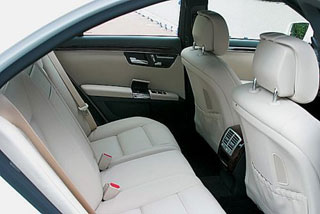 Advantages and disadvantages
Advantages and disadvantages + The highest level of equipping auxiliary electronics systems, variable hybrid drive.
- Not a too informative brake pedal, loud sound indicators of turn signals.
Specifications
Mark and Model - MB S 400 Hybrid
Dimensions - 5096x1871x1479 mm
Engine - gasoline + electric motor, 3498 cm3, 279 (299)* L.S./6000 min -1
Transmission - automatic, 7 -speed KP
Dynamics - Max 250 km/h; 7.2 s to 100 km/h
Competitors - Lexus LS 600h L
Our opinion
Having become a new standard of the Russian automobile market in terms of equipping with innovative systems and auxiliary electronics, the hybrid S-Class, of course, will further strengthen the Mercedes-Benz position in Russia and will create a good bridgehead in the War of electric motor. And a year later, the S 400 Hybrid will be sucking and heavy artillery in the face of a hybrid ML.
Author: Vladimir Makkaveev
Source: Magazine 5 wheel [July 2009]

